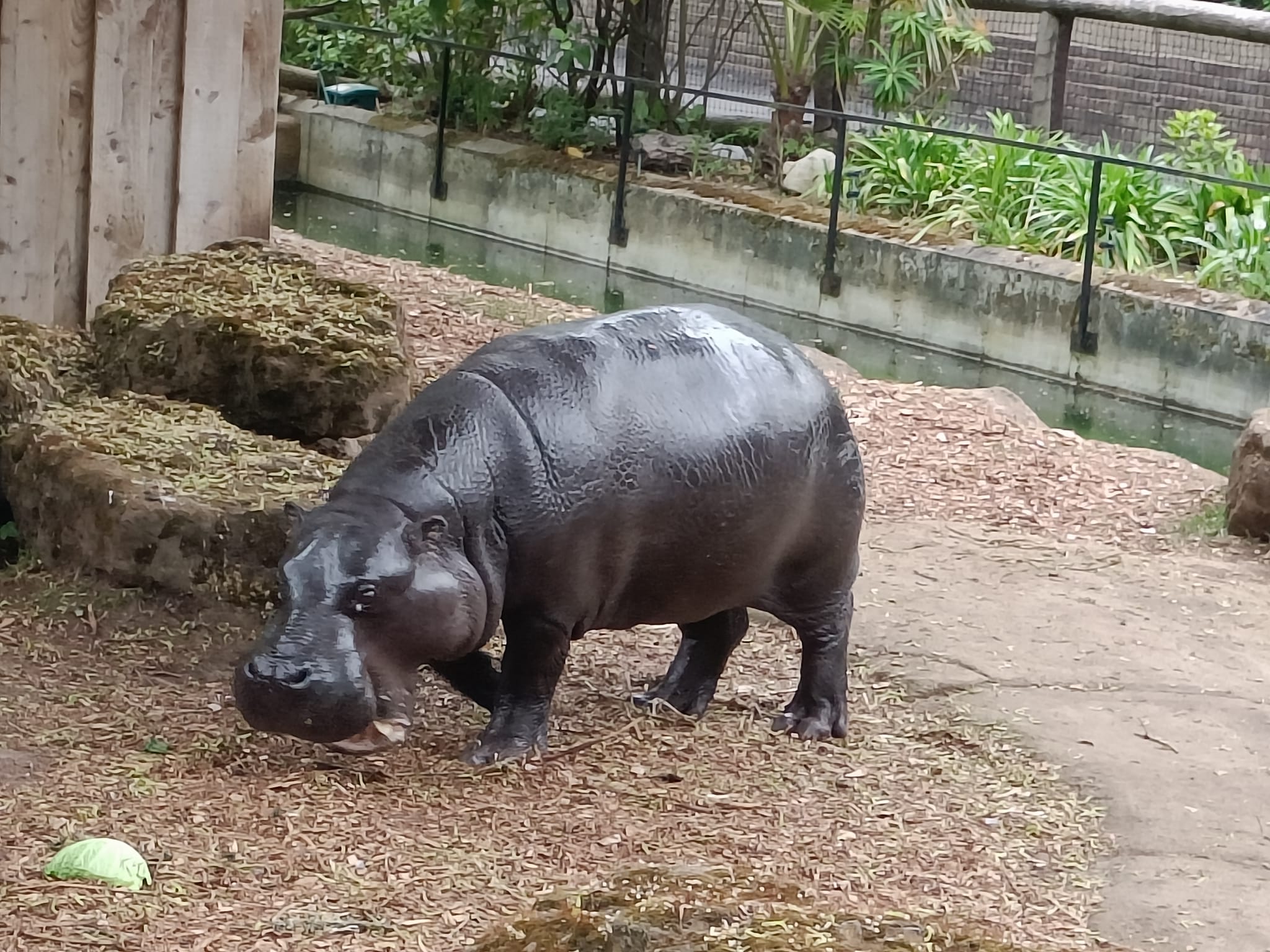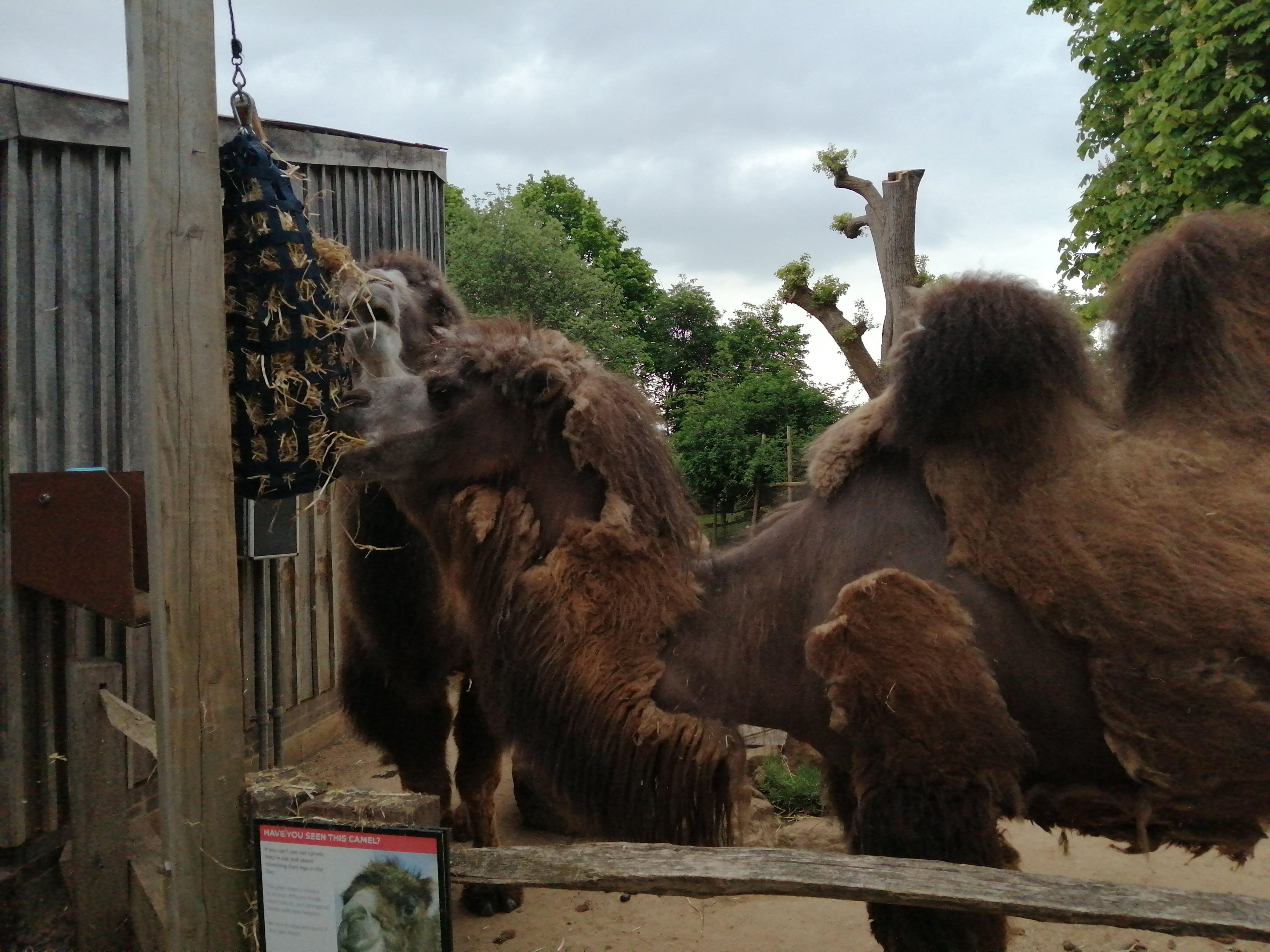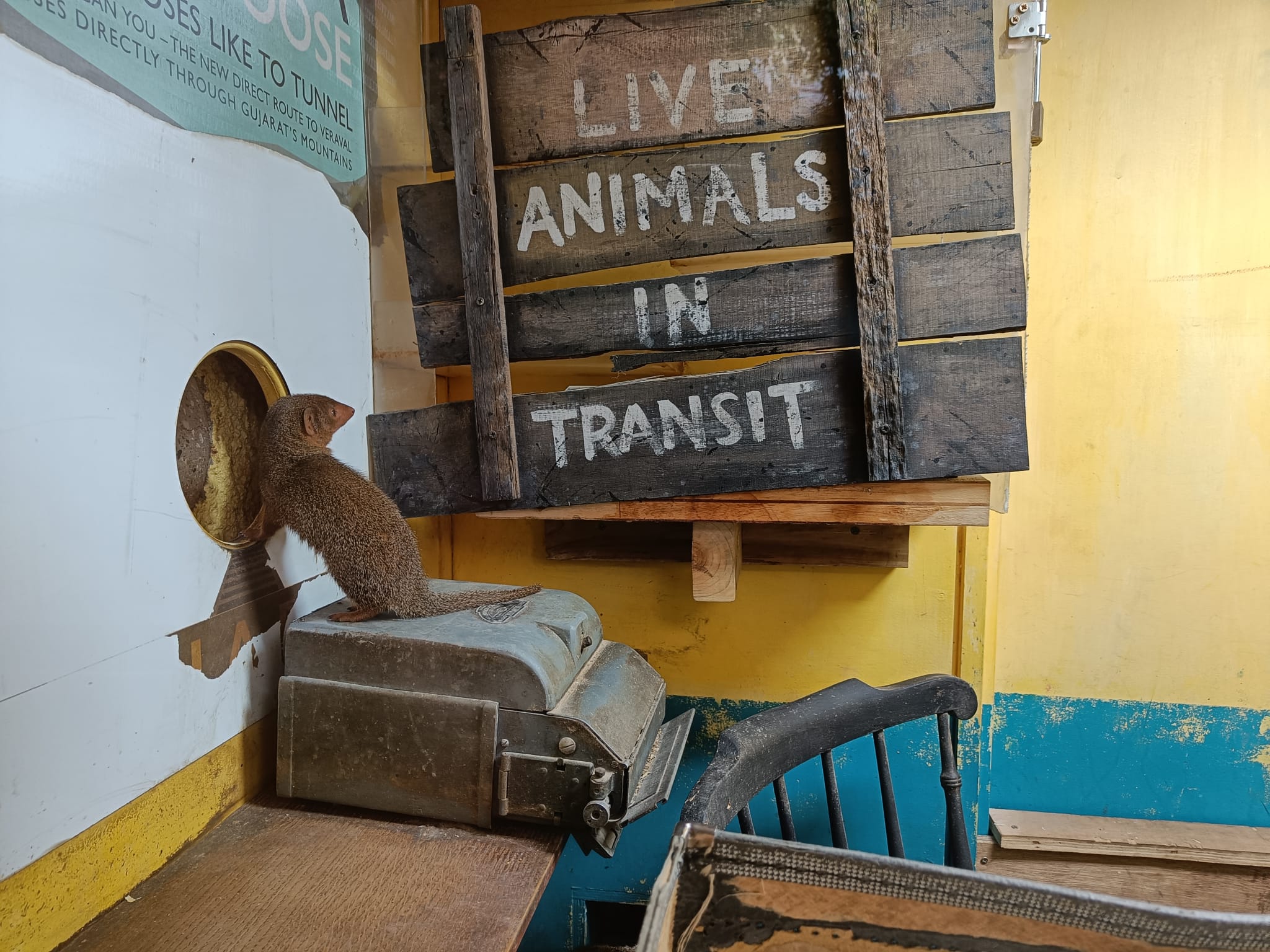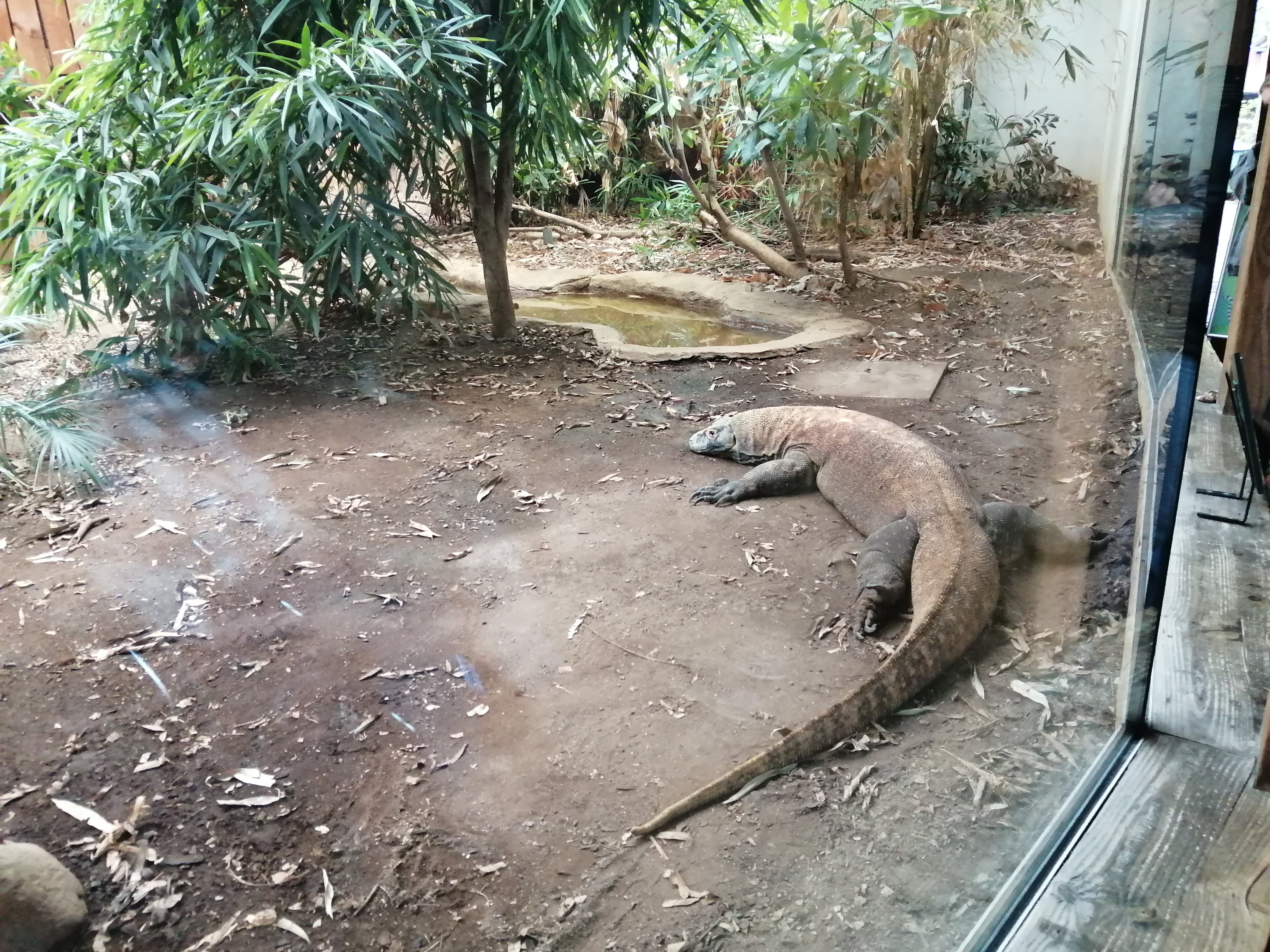
“How much would you pay for an artwork made of animal poo?”
It’s not a question I’ve ever considered before, to be perfectly honest.
“Um... Nothing?”
I am in the minority, as it turns out.
“These guys’ latest piece went for £30,000 at auction.”
The “guys” in question are ZSL London Zoo’s pygmy hippos, whose talents involve whipping their tails around to spray their excrement with gay abandon. Enterprising zookeepers – probably desperate to claw back some money after Covid forced the zoo’s prolonged closure and cut off its main revenue stream – decided to utilise this unique skill, setting up canvases with stencils on to produce the one-of-a-kind pieces.

It’s one of innumerable interesting facts woven into our exclusive after-hours tour of London Zoo, part of its new Twilight overnight offering. It’s an animal enthusiast’s dream: for a fairly handsome sum, guests get to bed down next to the lion enclosure for the night. Opportunities to warble ‘The Lion Sleeps Tonight’ on repeat aside, the package includes some truly bucket-list experiences, including two guided tours with experts after all other visitors have left for the day.
And it’s only when the zoo closes its doors that many of its inhabitants really come to life.
Upon arrival, we drop bags in our pad, a cute cabin-type affair with en-suite shower a stone’s throw from where the zoo’s two lions, Arya and Bhanu, are respectively chilling out or relentlessly pacing.
We start our Night At The Museum-esque tour here, met with a glass of sparkling wine (which pleasantly ups the luxe factor) and two enthusiastic guides. First of all we’re treated to a geographical overview – apparently one of the most-asked questions is why the Land of Lions’ design is inspired by western India’s Sasan Gir national park, rather than the Lion King aesthetic we’ve all come to associate with the king of the jungle. It’s because these are Asiatic rather than African lions: the main difference being, for the males, a shorter, sparser mane, plus a distinguishing fold of skin that runs the length of its belly.
In the hush of a zoo cleared of punters, every noise from the residents – who are a fairly noisy bunch – becomes enhanced
In the hush of a zoo cleared of punters, every noise from the residents – who are a fairly noisy bunch – becomes enhanced. This is particularly true of Bhanu’s roar on the day we visit, though we’re told it’s nothing compared with when he really gets going.
“He’s only pacing and roaring because we’re here,” says our guide. “He’s making it plain that this is his territory – and that Arya is his female.” The female in question looks nonplussed; there’s something rather sweet about his chivalrous strutting when she’s apparently not bothered in the slightest.
Moving on, we hit the camels, who are cajoled into making an appearance with some appetising-looking branches of eucalyptus (the smell really does it for them, we’re told). As summer’s approaching, one of them looks a little raggedy – he’s losing his hair in preparation for the hotter months, and who can blame him? We’re quizzed on the ultimate red herring: “What’s in a camel’s hump?” The answer we were all missold in our youth gets predictably trotted out – “Water?” – before that myth is officially busted by a fellow guest who is something of a wildlife aficionado.

“They’re made of fatty tissue!”
Mmm. I think I preferred the “fake news” answer.
Then it’s on to the aforementioned pygmy hippos, who are worlds apart from the non-pygmy variety – around a tenth of their weight and inclined to live alone instead of in 30-strong groups – before swinging by the warthogs to chuck plain popcorn at them as an evening snack.
Slightly peckish myself by this point, I’m delighted to hear that dinner – the kind designed for humans – is next on the agenda. We’re taken to a private room off the zoo’s main restaurant and served up hearty plates of blackened salmon with lime and coriander mayo, alongside sautéed thyme and garlic new potatoes, followed by chocolate brownie with raspberry purée and cream.
By the time we’re finished, the sun’s dipped below the horizon, but our work has only just begun. A big part of the keepers’ job is called “enrichment”: creating activities to ensure the animals are engaged, often mimicking conditions they’d experience in the wild. Sometimes this involves them having to work for their food (the lions often have to catch their dinner as it whizzes across the enclosure on a zipline), while at other times they’re given special games or toys to play with.

This evening, it’s our turn to help out. We don gloves and masks and prep two enrichment activities for the mongooses we’ll visit next morning: spritzing balls with a variety of perfumes – they go nuts for scents – and hiding live mealworms in layers of soil for them to find and munch on.
Now it’s properly dark, we follow close behind our guides to see the porcupines. Using red light instead of a torch to make sure we don’t hurt their sensitive eyes, the staffers point out the latest addition to the family – Hershey, a baby porcupine (or porcupette), born to parents Hettie and Henning in March this year.
Giving birth to a ball of spikes might not sound the most pleasant of experiences, but we learn that babies’ quills are soft to begin with, before hardening after they’ve been born. And thank goodness.
Giving birth to a ball of spikes might not sound the most pleasant of experiences, but we learn that babies’ quills are soft to begin with
We’re not nocturnal ourselves, so at this point we’re escorted back to our lion-adjacent digs and warned not to wander the zoo at night. The keepers also alert us to the fact that we might be awoken by that master of mimicry, the African grey parrot, making all manner of creepy noises (including the sound of children laughing – not spooky at all).
And yet sleep comes easy in the Land of the Lions. It’s hard to believe, in fact, that we’re in Zone 1 of a capital city in the pindrop quiet of the cabin, far from London’s busy roads.
I wake refreshed the next morning, ready for a full English followed by our final tour, during which we get to hang out with a Komodo dragon, see the mongoose community play with our pre-prepared enrichment activities and get a private look at the zoo’s world-leading Galápagos tortoise enclosure, which uses groundbreaking tech to recreate the conditions of their natural environment in the wild.

I’m not ready to leave – and if I didn’t have the small matter of a job to get to I wouldn’t have to. The experience includes entry to London Zoo all day on the day you check in and on the day you check out. But alas, it’s time to go. There’s just time for one more round of “aweem away, aweem away, aweem away, aweem away” before it’s back out into Regent’s Park, Bhanu’s stately roar still ringing in my head.
Travel essentials
A lodge for two people costs from £192.50 per person per night (based on twin-share), with each additional child from £65 each.
Includes: complimentary drink upon arrival; two exclusive after-hours tours of the zoo at sunset and after-dark; one exclusive tour in the morning after breakfast, including a meet and greet with a keeper; overnight stay in a private lodge – double or twin bed, en-suite; complimentary toiletries, tea and coffee-making facilities; two-course dinner and buffet breakfast; entry into ZSL London Zoo for two days either side of visitors’ stay; free parking. Guests are also welcome to visit ZSL Whipsnade Zoo on the second day.







